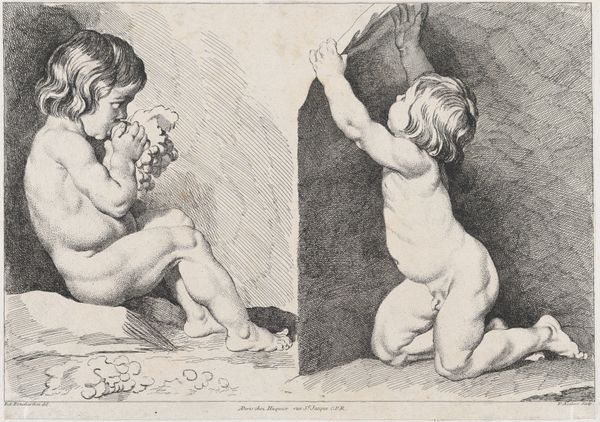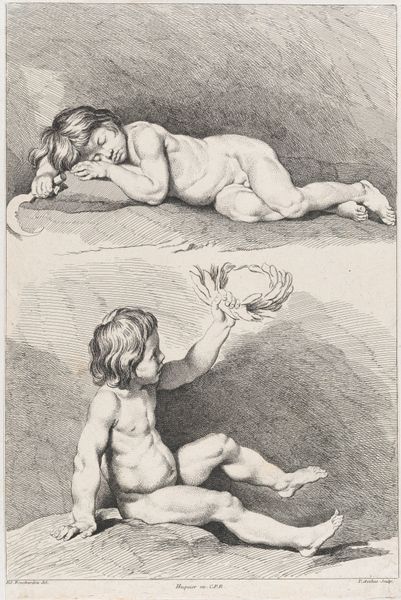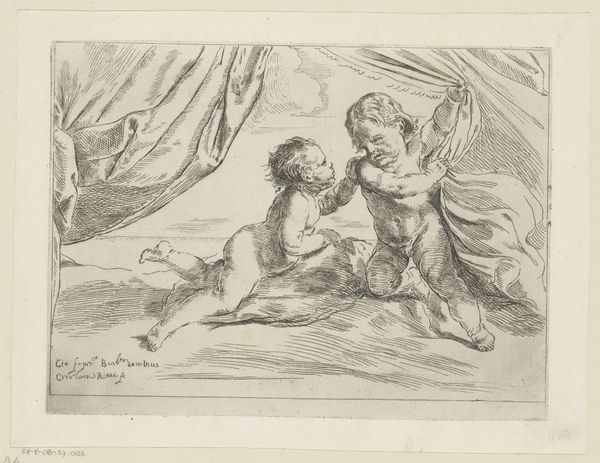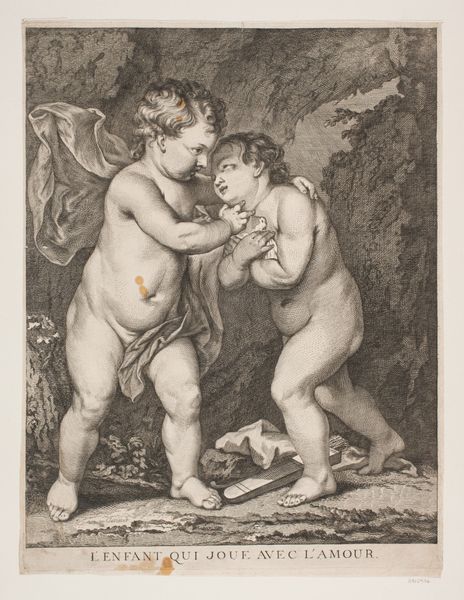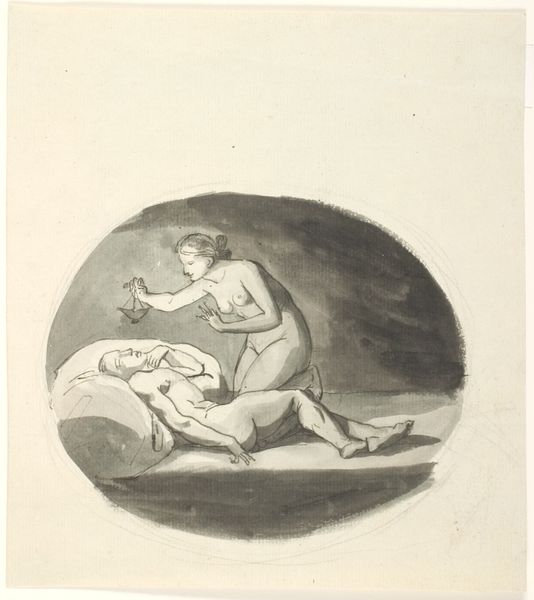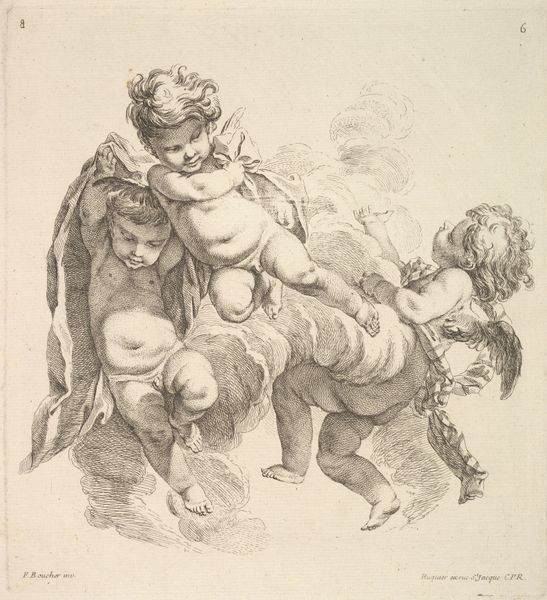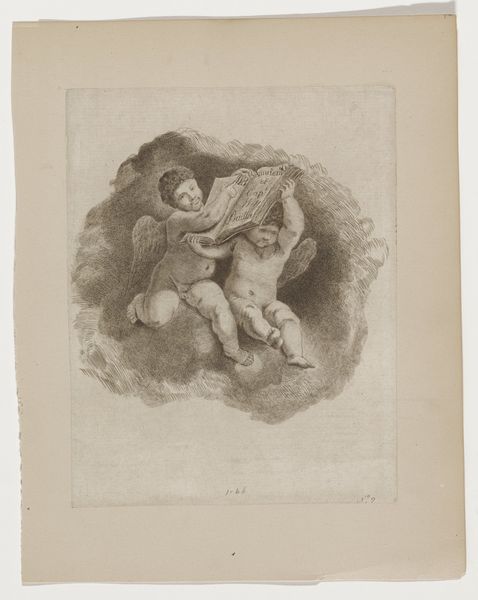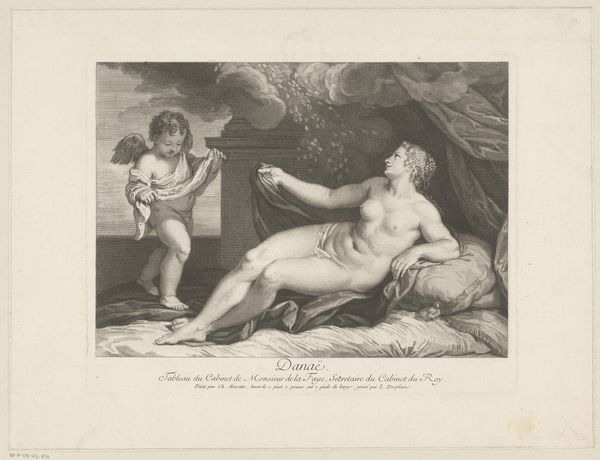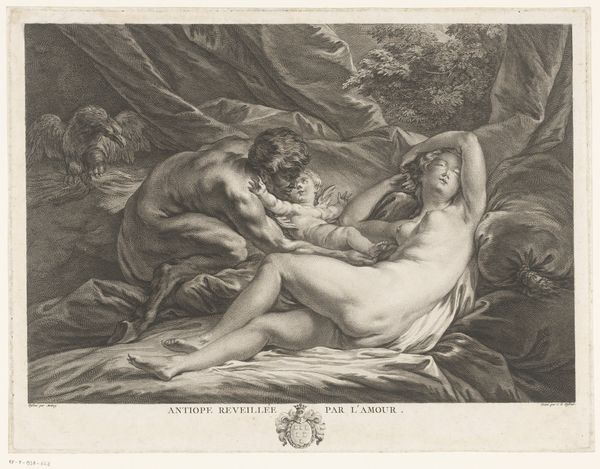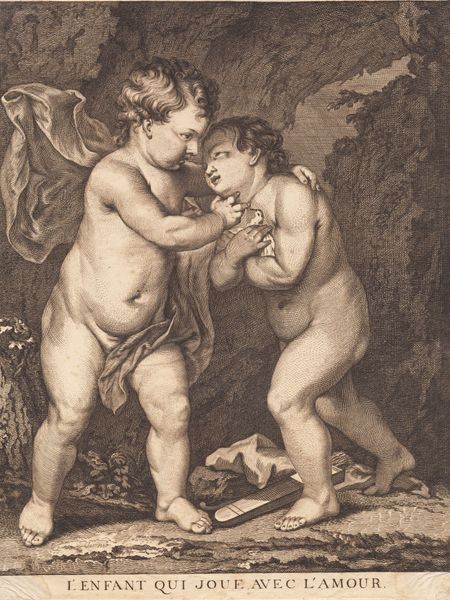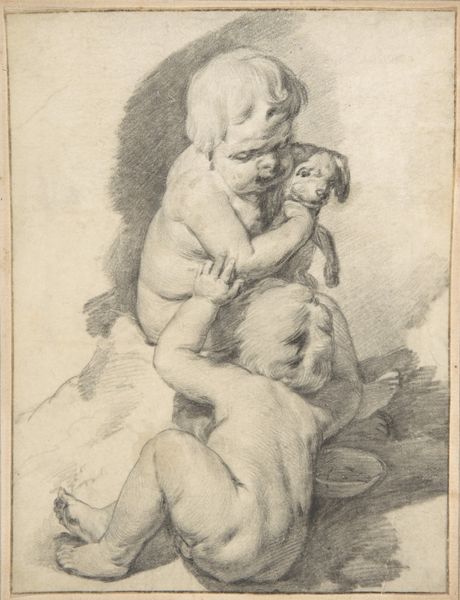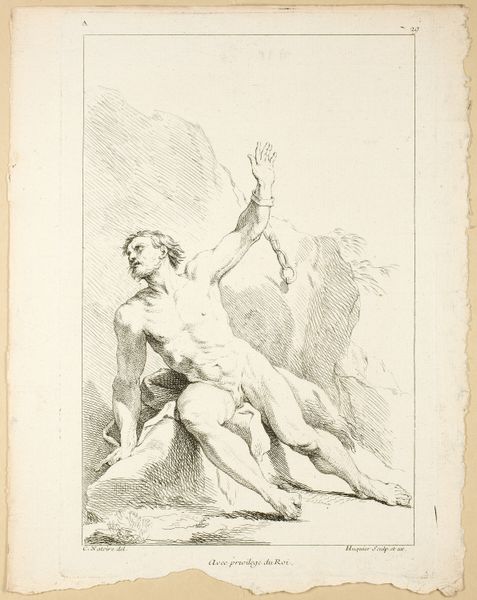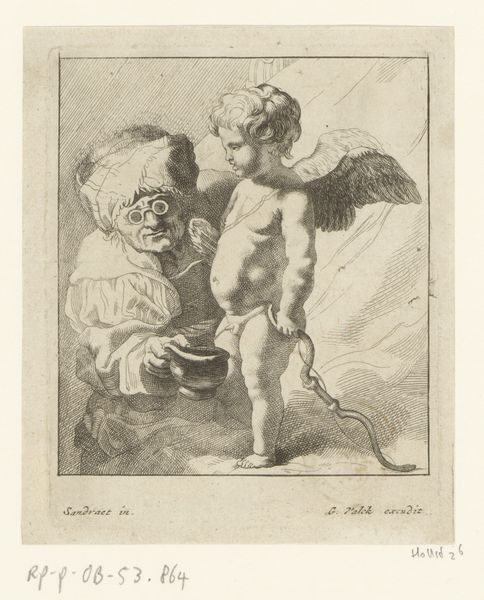
New Book of Children, title page 1720 - 1760
0:00
0:00
drawing, print
#
drawing
#
baroque
# print
#
boy
#
figuration
#
pencil drawing
#
nude
Dimensions: Sheet (trimmed): 15 1/16 × 9 15/16 in. (38.2 × 25.3 cm)
Copyright: Public Domain
Editor: Here we have Pierre Alexandre Aveline’s "New Book of Children, title page," created sometime between 1720 and 1760. It’s a print and drawing piece currently residing at the Met. I'm struck by the contrast in poses; one figure is still, almost statuesque, while the other seems to be reaching out with great energy. What strikes you most about this composition? Curator: The linearity of the work immediately draws my attention. Note the prevalence of the hatch mark—it not only defines form, creating the illusion of three-dimensionality on a flat plane, but also dictates the tonal range. The subtle variations in the density and direction of these lines create a delicate dance of light and shadow. How does this linearity contribute to the overall effect? Editor: I see what you mean! It does create depth, but also, because it’s so linear, it feels almost…flat, at the same time? Like the figures are existing in two spaces at once. It feels intentional, but I am not sure why. Curator: Precisely. Observe how the artist manipulates the orientation of the figures within the frame. One child is grounded, firmly planted within the lower-left quadrant, while the other’s active pose thrusts him forward, toward an unseen space beyond the picture plane. Does that directional contrast alter your perception of their relationship? Editor: Absolutely. One is contained, while the other bursts out. Is that connected to the "New Book of Children" title? Like they are exploring new boundaries and escaping old forms? Curator: That is a compelling consideration. A formal reading would suggest this dichotomy exists purely within the visual language of the piece, and its connection to something beyond that may fall into the realm of interpretation. But let us ask, could such visual dynamism suggest the inherent tension between childhood constraint and the burgeoning desire for autonomy? Editor: That’s really fascinating! I came in thinking about Baroque playfulness, but focusing on the lines and shapes brings out something much more complex. Curator: Indeed. Through close examination of form and technique, we can unveil layers of meaning that might otherwise remain hidden. The materiality and formal construction here become expressive tools in themselves.
Comments
No comments
Be the first to comment and join the conversation on the ultimate creative platform.
